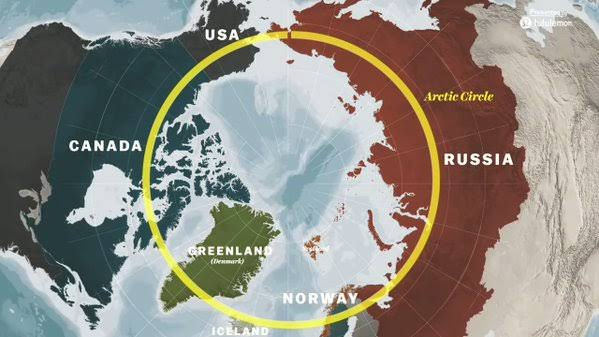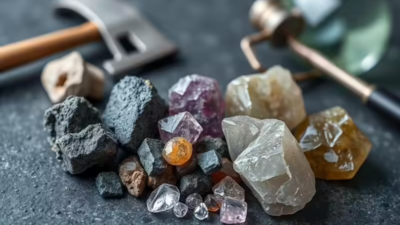The Great New Game - The Grand Arctic Circle
- Aftar Ahmed

- Sep 17, 2020
- 6 min read

Source: International centre for defence and security
Afghanistan was the flashpoint of the great game between the two titans: the British Empire and the Russian Empire. Well, that era of geopolitical games was only concentrated on the threat of invasion of the land but now the term ‘Great Game’ has a different appeal and a different color to it. The Great Game now is a collection of geopolitical, geo-resource, and geo-strategic stages to secure one's national or allied interests. Let us examine the great game in the Arctic Circle which is going to define 21st century world peace, standings, and stability.
The Circle
The Arctic Circle is one of the five major circles of latitude on the map of the Earth. The Arctic Circle includes landmasses of countries such as the US, Canada, Norway, Sweden, Finland, Denmark, Iceland, and Russia, all of which constitute the Arctic Council. The Arctic is nothing but mostly ice—for now at least. The temperatures in this region go down to around -50°c.

Source: Vox
How is the Game Shifting
The Arctic has not been in the centre of geopolitics and relevance like the Indo-Pacific region by many nations but what if one were to say that the Arctic Circle will dwarf the geo-strategic standings of the Indo-Pacific? The basic relevance of the Indo-Pacific region stands on three aspects—trade, oil, and population. While there is no doubt about the region's population numbers, what is going to go down is the trade and oil route usage of this place. The thirst of China, India and other big nations for oil from the Middle East leads to this region's energy and oil routes becoming important. Moreover, trade with Europe from the Suez Canal and the Strait of Malacca has made this region so important mainly after the rise of China and the economic boom in Asia. But now that is changing rapidly as the Middle East looks for its post-oil economy and as the supply chains of the world spread after the Coronavirus pandemic which was already happening due to trade confrontations between the big players like the US, China, and the European Union. The volume of trade and oil supplies are huge in the Indo-Pacific. A large share of world trade goes from the Indo-Pacific region and major quantities of oil supplies go to these thirsty nations. While the importance of Indo-Pacific will remain intact with its huge population numbers, its importance as a route will decline. Also, the importance of the South China Sea for China remains to secure the intra-regional sea lanes, trade transits, and resources in the future regardless of the Arctic game.
Here Comes the Arctic
The Suez Canal is used for trade with Europe by China, India and also used by many nations that are rapidly growing just because it cuts the time of supplying goods through sea-lanes. But as the Arctic Circle keeps on melting and the ice keeps on getting thinner day by day, a new northern trade route that never was there is taking shape, which would considerably bring down travel distance and time. The other important factor is the deposits of natural gas, oil, and the continental shelf land that is going to be available after the melting of the region, which is already taking place rapidly. Russia is going to benefit the most from this climate change happening, The US Geological Survey estimates that undiscovered oil and gas resources in the Arctic amount to 22% of the world's total, about 412 billion barrels of oil. This meltdown will shift the trade lanes from the Indo-Pacific region to the Arctic region in significant numbers and volume. This will also lead to a change of oil and natural gas suppliers for the East Asian region and the subcontinent in future from the Arabs and the Iranians to the Russians who have already started to prepare themselves.

Source: The Hill
Russians are building new ports and renewing the old ones into high tech ports for their 21st century needs. Russians are also increasing their winter warrior capabilities and building up the cold war era bases back again for any future confrontation with any of the Arctic Circle nations. It showed off its Arctic military prowess at the Red Square on Victory Day which happens every year on May 9. Russia also has the largest number of icebreakers in the world which they use for keeping the circle open for navigation, some of which are nuclear powered. Russia is not stopping here, it has floating nuclear power stations to give power to the remote cities of the Siberian and the Arctic region. Also with the rapid increase in renewable energy and climate change activism, there has been outright opposition for fossil fuel emissions but Russia knows that oil and natural gas are going nowhere, at least for now. Also, the shift to renewable has not been taken into consideration in these rapidly growing economies. This is the great game that Russia has full interest in winning. Vladimir Putin has said that they are going to defend their interests in the Arctic at all costs, and why not? It is going to be of huge revenue for a sanction-hit nation of old greatness.
Interests in The Arctic
It's not only the Russians who have recognized the importance of the region in this 21st century great game. Nations like China, which has called itself a near-Arctic nation, India, which has shown interest in investing in resource extraction, investing in regional business and also in scientific research, are among the names. This is proved by Chinese and Indian leaders' visits to cold Russian regions. Denmark and Norway, the smaller players have shown their full interest and are preparing for the worst to secure their interests from the regional hegemon Russia.
But now let's come to the biggest player alongside Russia in this game and that is none other than the United States of America, which has established that the Arctic is under their fuller scanner and they will do whatever they have to keep their interests safe and secure in the circle. This is the reason why during the Presidency of Harry Truman and now during President Trump, the US wanted to buy Greenland from Denmark. Their sole aim was to play in full sight in this great game and now when the first moves on the chessboard are being taken they don't want to remain the underdog in this arena.
The US is re-establishing its cold war bases and cold war radar stations in the regions of Alaska and advancing its military, naval, and air bases in Iceland and Europe to tackle the Russian buildup. Its allies like Finland and the UK also have a huge role to play and are training soldiers to fight in the harsh winter conditions. The UK is also building up its naval supremacy along with the US navy in the region of the GIUK gap which remains a choke point for the Russians.
Recent Developments
In 2018, the NATO held the Trident Juncture with nearly 50,000 participants, its biggest military exercise in decades. This serves as a big message. The United Kingdom has also announced a new ‘Defense Arctic Strategy’. It has promised to upgrade the cold-weather training of the Royal Marines in Norway and deployed four RAF Typhoons to patrol the Iceland skies for surveillance. The US is also sending more marines on long-term military duties and has threatened to send naval vessels through Arctic trade lanes for the first time. All this is nothing but a warning to Russia that the great game has started and it's not the only player that is well prepared for the match and the showdown.

Source: International centre for defence and security
While America has its allies, Russia is not playing alone either. It has China on its own side. Both Russia and China are investing hugely in ports, roads, and railway links to safeguard the transport and military deployment networks, while also carrying out military exercises to show preparedness and willingness to act for safeguarding their interests
What to Look Out For?
In the end, we are faced with this question of what to look up for in this great game. The answer is processing day by day. We need to see more and wait for the major developments brick by brick. History and geopolitics tell us that no geopolitical development happens in a short span of years but in the long span of decades. The developments between Russia and China along with the developments between the US and the UK, and their allies in Europe, need to be seen. This great game may revive NATO into a more advanced military alliance fit for the 21st century. All that remains to be seen. The stakes are high as it includes land, resource, and time-saving routes. The Arctic has everything that drives humankind and the transnational corporations crazy.
References:
1. The Guardian: https://amp.theguardian.com/world/2019/jan/24/military-buildup-in-arctic-as-melting-ice-reopens-northern-borders
2. US Geological Survey: http://library.arcticportal.org/1554/
3. Stockholm International Peace Research Institute: https://www.sipri.org/sites/default/files/2019-12/sipribp1912_geopolitics_in_the_arctic.pdf
By Harsh Suri- Guest Writer
Harsh is on his mission with political science as his partner. Hindu College has given him a lot of know-how too. He is driven by geopolitics and geo-strategic issues. he loves to blend and understand international affairs with the domestic characteristics that shape it. Harsh believes in digging down the topic rather than having a cakewalk on it. you can ping him up on foreign policy anytime.






Comments